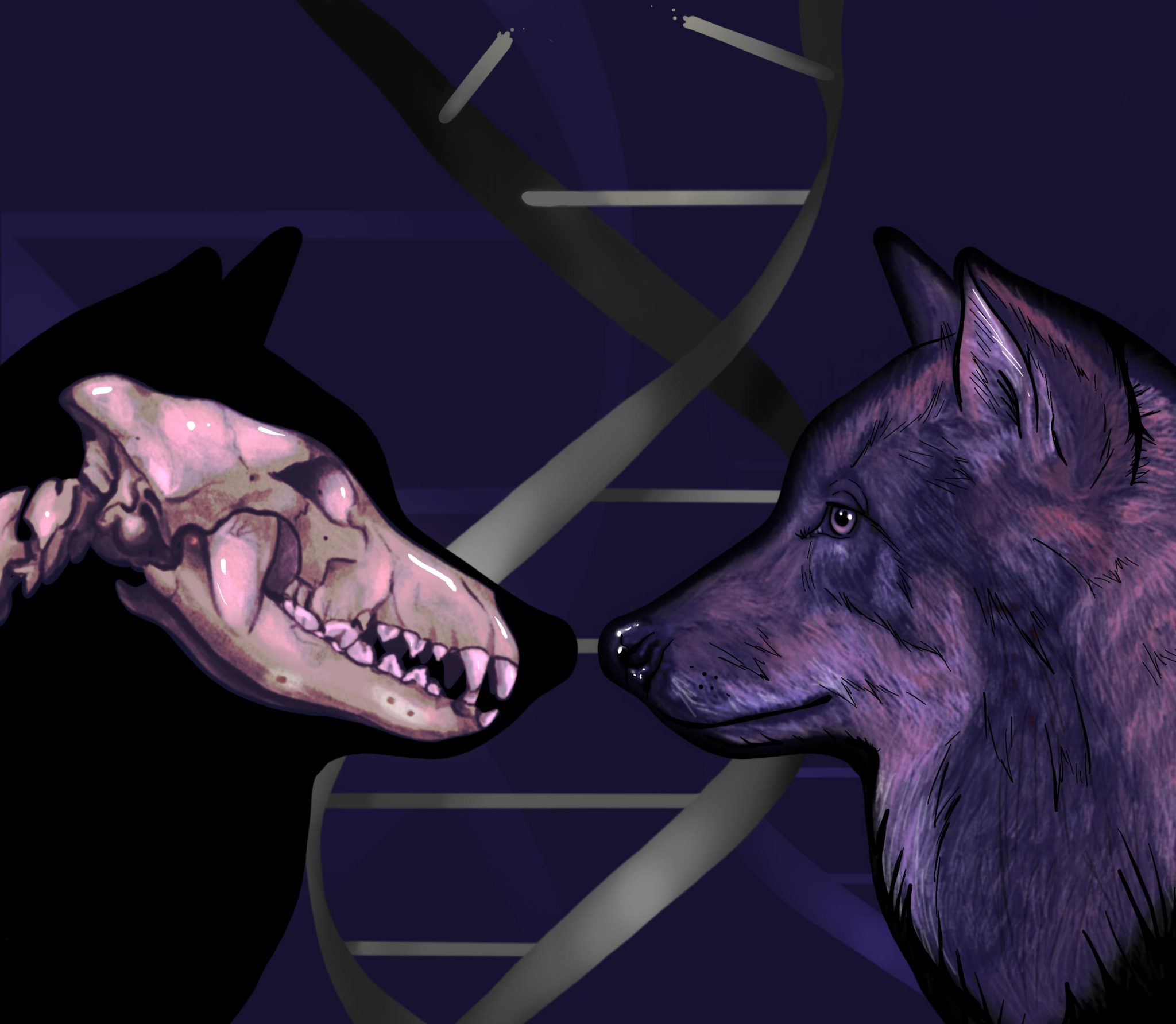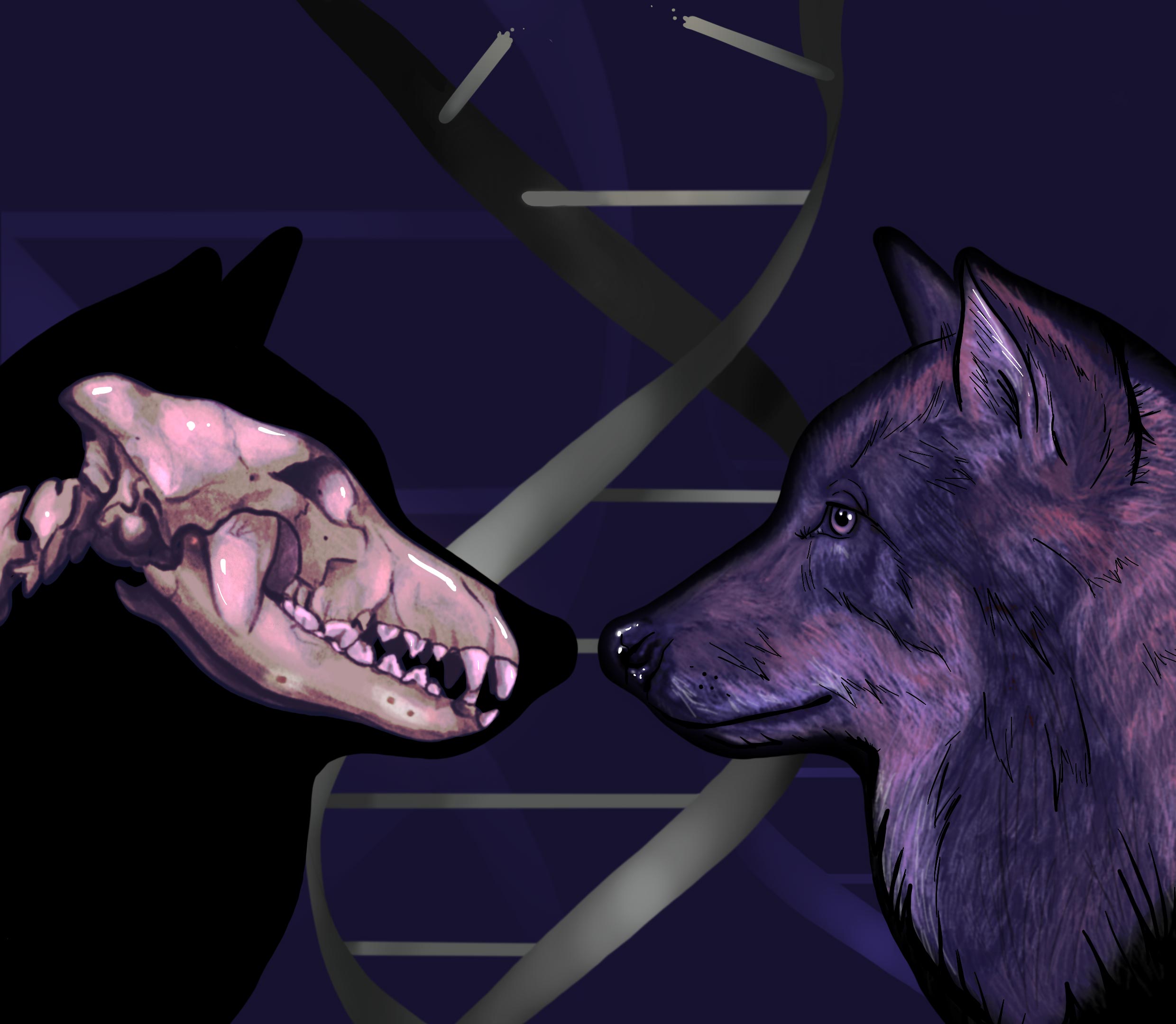
Secondo un nuovo studio, l’origine dei cani può essere fatta risalire ad almeno due gruppi di antichi lupi. Credito: Jessica Ray Peto
Un gruppo internazionale di genetisti e archeologi ha scoperto che l’origine dei cani può essere fatta risalire ad almeno due gruppi di antichi lupi. La ricerca ci porta un passo avanti per svelare il mistero del luogo in cui i cani subirono l’addomesticamento, uno dei grandi e straordinari misteri dell’antichità umana.
È noto che i cani discendevano dal lupo grigio, con questa addomesticazione avvenuta almeno 15.000 anni fa durante l’era glaciale. Tuttavia, non è ancora noto dove ciò sia avvenuto e se sia avvenuto in un luogo o in più luoghi.
Ricerca precedente utilizzando la documentazione archeologica e confronta[{” attribute=””>DNA of dogs and modern wolves has not found the answer.
In their new study, published in Nature on June 29, 2022, the researchers, which were led by scientists from the Francis Crick Institute, turned to ancient wolf genomes to further understanding of where the first dogs evolved from wolves. They analyzed 72 ancient wolf genomes, spanning the last 100,000 years, from Europe, Siberia, and North America.

A 32,000 year-old wolf skull from Yakutia from which a 12-fold coverage genome was sequenced as part of the study. Credit: Love Dalén
The DNA came from the remains of previously excavated ancient wolves, with archaeologists from 38 institutions in 16 different countries contributing to the study. The remains included a complete, perfectly preserved head from a Siberian wolf that lived 32,000 years ago. Nine different ancient DNA labs then collaborated on generating DNA sequences from the wolves.
By analyzing the genomes, the scientists found that both early and modern dogs are more genetically similar to ancient wolves in Asia than those in Europe, suggesting domestication occurred somewhere in the east.
However, they also found evidence that two separate populations of ancient wolves contributed DNA to dogs. Early dogs from north-eastern Europe, Siberia, and the Americas appear to have a single, shared origin from the eastern source. But early dogs from the Middle East, Africa, and southern Europe appear to have some ancestry from another source related to wolves in the Middle East, in addition to the eastern source.

A 32,000 year-old wolf skull from Yakutia from which a 12-fold coverage genome was sequenced as part of the study. Credit: Love Dalén
One possible explanation for this dual ancestry is that wolves underwent domestication more than once, with the different populations eventually mingling together. Another possibility is that domestication happened just once, and that the observed dual ancestry is due to these early dogs then mixing with wild wolves. It is not currently possible to determine which of these two scenarios actually occurred.
Anders Bergström, co-first author and post-doctoral researcher in the Ancient Genomics lab at the Crick, says: “Through this project we have greatly increased the number of sequenced ancient wolf genomes, allowing us to create a detailed picture of wolf ancestry over time, including around the time of dog origins.”
“By trying to place the dog piece into this picture, we found that dogs derive ancestry from at least two separate wolf populations – an eastern source that contributed to all dogs and a separate more westerly source, that contributed to some dogs.”

‘Dogor’, an 18,000 year-old wolf puppy from Yakutia, which was included in the study. Credit: Sergey Fedorov
The team is continuing the hunt for a close ancient wolf ancestor of dogs, which could reveal more precisely where domestication most likely took place. They are now focusing on genomes from other locations not included in this study, including more southerly regions.
As the 72 ancient wolf genomes spanned around 30,000 generations, it was possible to look back and build a timeline of how wolf DNA has changed, tracing natural selection in action.
For example, they observed that over a period of around 10,000 years, one gene variant went from being very rare to being present in every wolf, and is still present in all wolves and dogs today. The variant affects a gene, IFT88, which is involved in the development of bones in the skull and jaw. It is possible that the spread of this variant could have been driven by a change in the types of prey available during the Ice Age, giving an advantage to wolves with a certain head shape, but the gene could also have other unknown functions in wolves.

‘Dogor’, an 18,000 year-old wolf puppy from Yakutia, which was included in the study. Credit: Sergey Fedorov
Pontus Skoglund, senior author and group leader of the Ancient Genomics lab at the Crick, says: “This is the first time scientists have directly tracked natural selection in a large animal over a time-scale of 100,000 years, seeing evolution play out in real time rather than trying to reconstruct it from DNA today.”
“We found several cases where mutations spread to the whole wolf species, which was possible because the species was highly connected over large distances. This connectivity is perhaps a reason why wolves managed to survive the Ice Age while many other large carnivores vanished.”
“Similar whole-genome time series from the Ice Age, in humans or other animals, could provide new information about how evolution happens.”
Reference: “Grey wolf genomic history reveals a dual ancestry of dogs” by Anders Bergström, David W. G. Stanton, Ulrike H. Taron, Laurent Frantz, Mikkel-Holger S. Sinding, Erik Ersmark, Saskia Pfrengle, Molly Cassatt-Johnstone, Ophélie Lebrasseur, Linus Girdland-Flink, Daniel M. Fernandes, Morgane Ollivier, Leo Speidel, Shyam Gopalakrishnan, Michael V. Westbury, Jazmin Ramos-Madrigal, Tatiana R. Feuerborn, Ella Reiter, Joscha Gretzinger, Susanne C. Münzel, Pooja Swali, Nicholas J. Conard, Christian Carøe, James Haile, Anna Linderholm, Semyon Androsov, Ian Barnes, Chris Baumann, Norbert Benecke, Hervé Bocherens, Selina Brace, Ruth F. Carden, Dorothée G. Drucker, Sergey Fedorov, Mihály Gasparik, Mietje Germonpré, Semyon Grigoriev, Pam Groves, Stefan T. Hertwig, Varvara V. Ivanova, Luc Janssens, Richard P. Jennings, Aleksei K. Kasparov, Irina V. Kirillova, Islam Kurmaniyazov, Yaroslav V. Kuzmin, Pavel A. Kosintsev, Martina Lázničková-Galetová, Charlotte Leduc, Pavel Nikolskiy, Marc Nussbaumer, Cóilín O’Drisceoil, Ludovic Orlando, Alan Outram, Elena Y. Pavlova, Angela R. Perri, Małgorzata Pilot, Vladimir V. Pitulko, Valerii V. Plotnikov, Albert V. Protopopov, André Rehazek, Mikhail Sablin, Andaine Seguin-Orlando, Jan Storå, Christian Verjux, Victor F. Zaibert, Grant Zazula, Philippe Crombé, Anders J. Hansen, Eske Willerslev, Jennifer A. Leonard, Anders Götherström, Ron Pinhasi, Verena J. Schuenemann, Michael Hofreiter, M. Thomas P. Gilbert, Beth Shapiro, Greger Larson, Johannes Krause, Love Dalén and Pontus Skoglund, 29 June 2022, Nature.
DOI: 10.1038/s41586-022-04824-9

